
Habronattus is a genus in the family Salticidae. Most species are native to North America. They are commonly referred to as paradise spiders due to their colorful courtship ornaments and complex dances, similar to birds-of-paradise. Males display intricate coloration, while females are cryptic.

Habronattus peckhami is a species of spider in the family Salticidae. It is found in the USA.
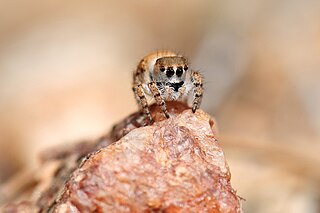
Habronattus ustulatus is a species of spider in the family Salticidae. It is found in the USA and Mexico.

Habronattus pyrrithrix is a species of jumping spider in the family Salticidae. It is found in the southwestern United States and western Mexico.

Habronattus cognatus is a species of jumping spider. It is found in North America.
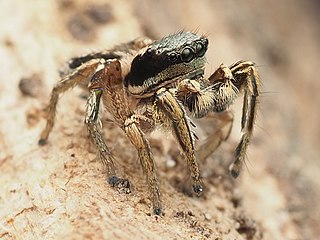
Habronattus mexicanus is a species of jumping spider in the genus Habronattus. The species was first identified in 1896 in Mexico, after which it is named, originally allocated to the genus Habrocestum. The species has subsequently been identified in locations in North and Central America, as well as islands in the Caribbean Sea. The spider is small, but displays one of the most complex sexual displays, including sophisticated vibatory song patterns.

Habronattus signatus is a species of jumping spider in the family Salticidae. It is found in the United States and Mexico.

Habronattus virgulatus is a species of jumping spider in the family Salticidae. It is found in the United States and Mexico.
Habronattus schlingeri is a species of jumping spider in the family Salticidae. It is found in the United States and Mexico.

Habronattus orbus is a species of jumping spider in the family Salticidae. It is found in the United States.
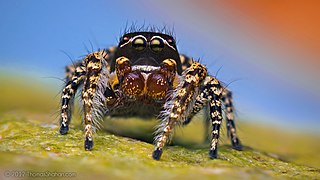
Habronattus pugillis is a species of jumping spider in the family Salticidae. It is found in the United States and Mexico.
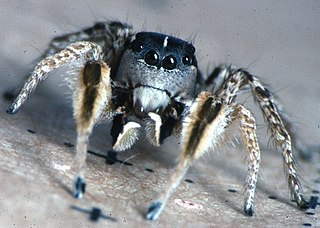
Habronattus tarsalis is a species of jumping spider in the family Salticidae. It is found in the United States and has been introduced into Hawaii.

Habronattus conjunctus is a species of jumping spider in the family Salticidae. It is found in the United States and Mexico.
Habronattus ocala, the ocala jumper, is a species of jumping spider in the family Salticidae. It is found in the United States.
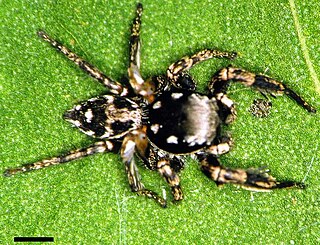
Habronattus brunneus is a species of jumping spider in the family Salticidae. It is found in the United States and the Caribbean Sea.
Habronattus sabulosus is a species of jumping spider in the family Salticidae. It is found in the southeastern United States.
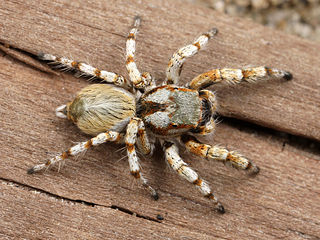
Habronattus amicus is a species of jumping spider. It is found in the western United States.

Habronattus tranquillus is a species of jumping spider in the family Salticidae. It is found in the United States and Mexico.
















